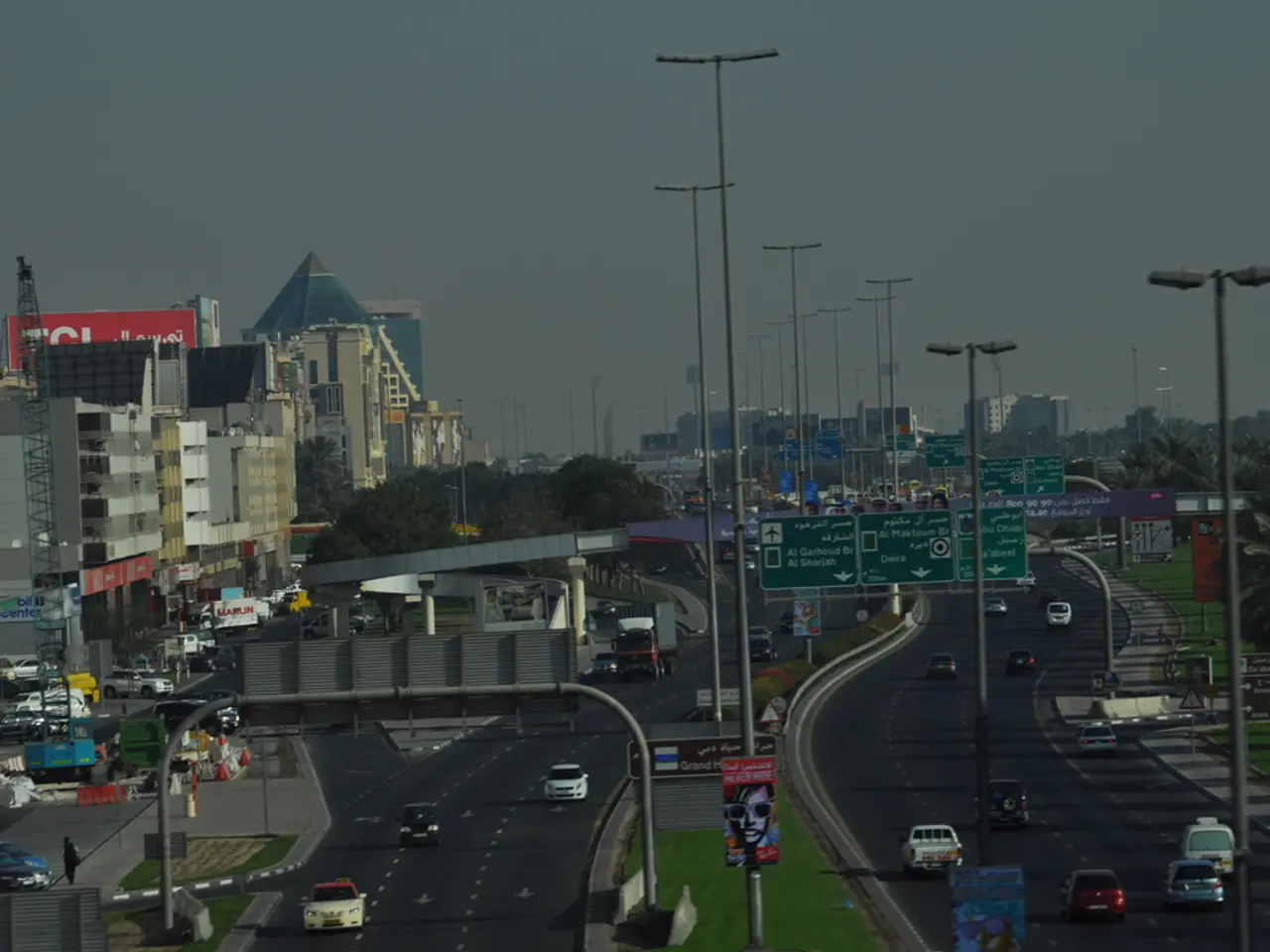City of Ha Noi implements AI-driven monitoring system throughout urban area
Hanoi, the capital city of Vietnam, has introduced an advanced AI-powered surveillance camera system aimed at improving traffic flow, enhancing public safety, and increasing transparency in law enforcement. The system, currently operational in key city locations, features 261 strategically installed cameras [1][2].
The cameras, equipped with a 360-degree scanning capability, offer comprehensive area coverage and can recognize faces and vehicle number plates from distances of up to 700 meters [1][2]. Ten distinct AI functions, including facial recognition, license plate detection, lane management, crowd monitoring, and identifying traffic violations, are integrated into each camera [1][2][3].
In real-time, footage is transmitted to a centralized city operations center for automatic analysis, processing, and immediate violation detection [1][3]. Notifications of traffic violations are sent to vehicle owners within two hours via the VneID and VneTraffic mobile applications, automating fine enforcement and reducing the need for physical police presence on roads [1][3].
The system's capabilities extend beyond traffic management, with plans to introduce environmental monitoring features by mid-2026. These features will identify improper waste disposal and sidewalk violations, promoting urban order [2].
The deployment of the AI surveillance network aligns with Hanoi’s broader modernization goals. By 2030, the city aims to install over 40,000 AI cameras to enhance public security, traffic safety, environmental protection, and national defence [2].
The system also manages traffic flow via 'green lanes' and automatically adjusts traffic lights based on real-time vehicle density. The facial recognition function allows authorities to detect wanted individuals and automatically alert the operations centre [2].
The initiative is part of the 'Smart Surveillance' scheme approved by the Government in 2020. The online penalty model, currently being piloted, enables citizens to interact with authorities and receive decisions efficiently and transparently.
By reducing reliance on human police presence, the AI surveillance network offers high-accuracy, wide-coverage traffic and public safety monitoring with prompt violation handling. This system is expected to be fully operational by December 18, 2025 [1][2].
Sources: [1] https://vietnamnet.vn/en/news/hanoi-to-install-40000-ai-cameras-by-2030-659809.html [2] https://www.channelnewsasia.com/news/asia/hanoi-ai-cameras-traffic-enforcement-261-cameras-2570206 [3] https://www.channelnewsasia.com/news/asia/hanoi-ai-cameras-traffic-enforcement-261-cameras-2570206
- The advanced AI-powered surveillance camera system in Hanoi not only aims to improve traffic flow and enhance public safety, but also extends to environmental monitoring, such as identifying improper waste disposal and sidewalk violations, promoting urban order.
- The deployment of AI cameras in Hanoi aligns with the city's modernization goals, with plans to install over 40,000 cameras by 2030, targeting enhancements in public security, traffic safety, environmental protection, and national defense.
- By automating traffic violation detection and enforcement, Hanoi's AI surveillance network offers high-accuracy, wide-coverage traffic and public safety monitoring, reducing the need for physical police presence on roads, while also managing traffic flow through 'green lanes' and adjusting traffic lights based on real-time vehicle density.
- The system's facial recognition function allows authorities to detect wanted individuals and automatically alert the operations center, contributing to the broader 'Smart Surveillance' scheme approved by the Government in 2020, which emphasizes efficient and transparent interaction between citizens and authorities.
- The AI cameras also integrate various AI functions like facial recognition, license plate detection, lane management, crowd monitoring, and identifying traffic violations, making the system an important part of the policy-and-legislation landscape in the realm of technology and politics, including policy on general news, environment, and military security, as well as policy related to technology, artificial-intelligence, and traffic and public safety management.




